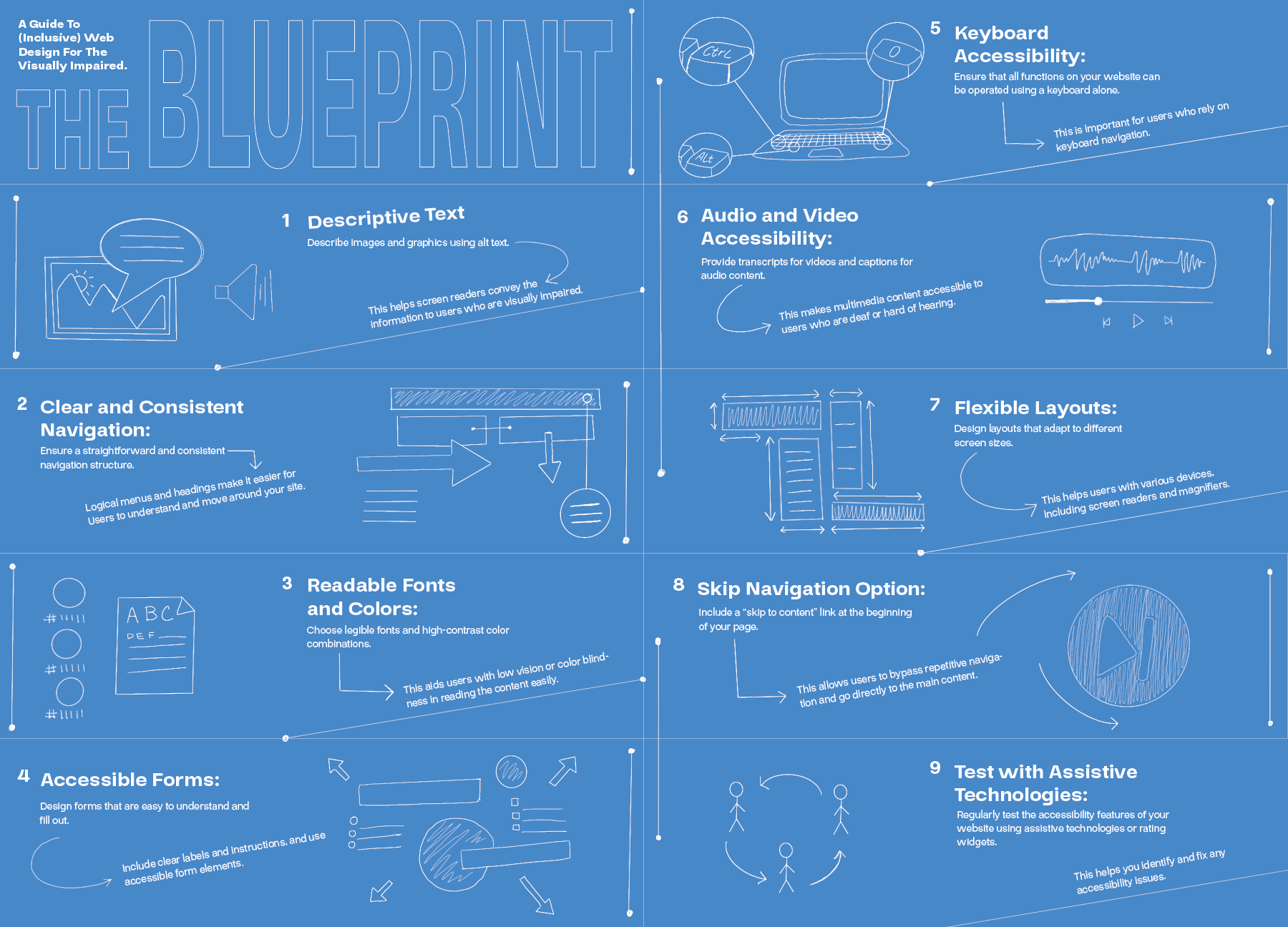

Focusing on design students and professors at the University of Georgia, I conducted a study to assess the current level of accessible design education in the curriculum and explore strategies to simplify and improve its integration into design classes.
I then designed a pamphlet to document the findings from the study, along with the essential steps for designing inclusively, for distribution amungst students, professors, designers, and more!
I then designed a pamphlet to document the findings from the study, along with the essential steps for designing inclusively, for distribution amungst students, professors, designers, and more!
Project Discription ········· Case Study
Medium ······················ Adobe Indesign/
Photoshop
Created ····················· Fall 2023
Medium ······················ Adobe Indesign/
Photoshop
Created ····················· Fall 2023
THE PROCESS
Brainstorming+ Collaging

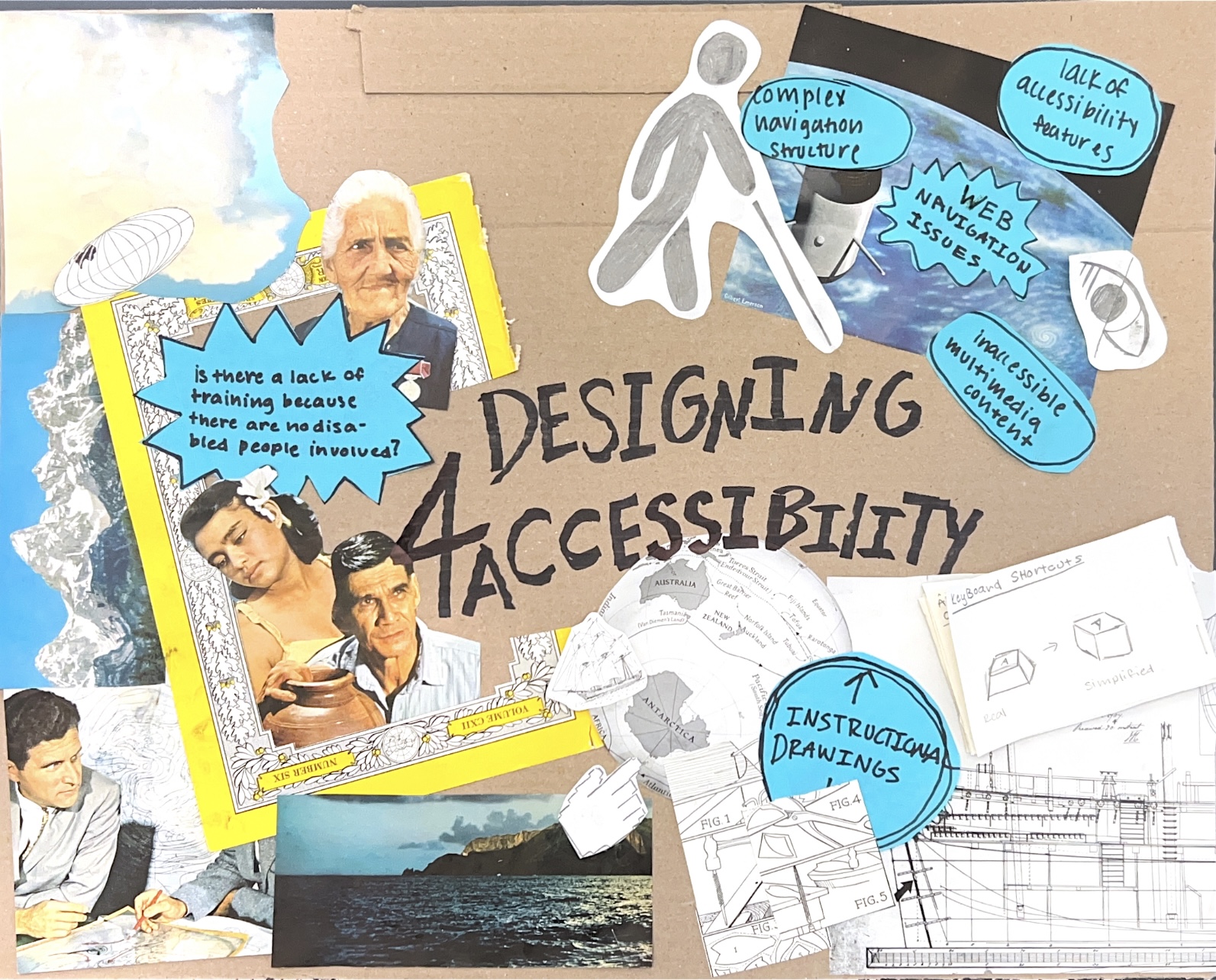
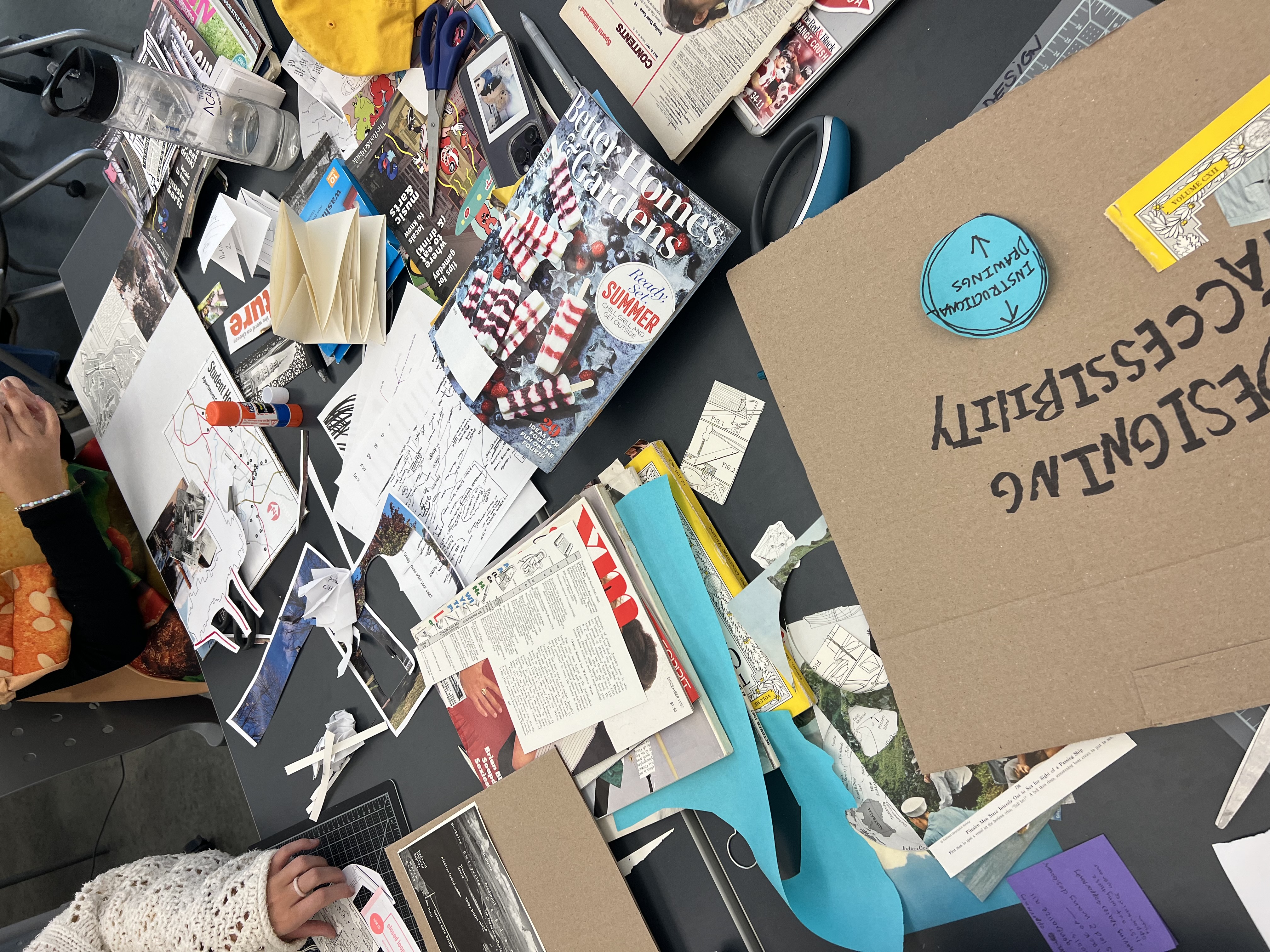

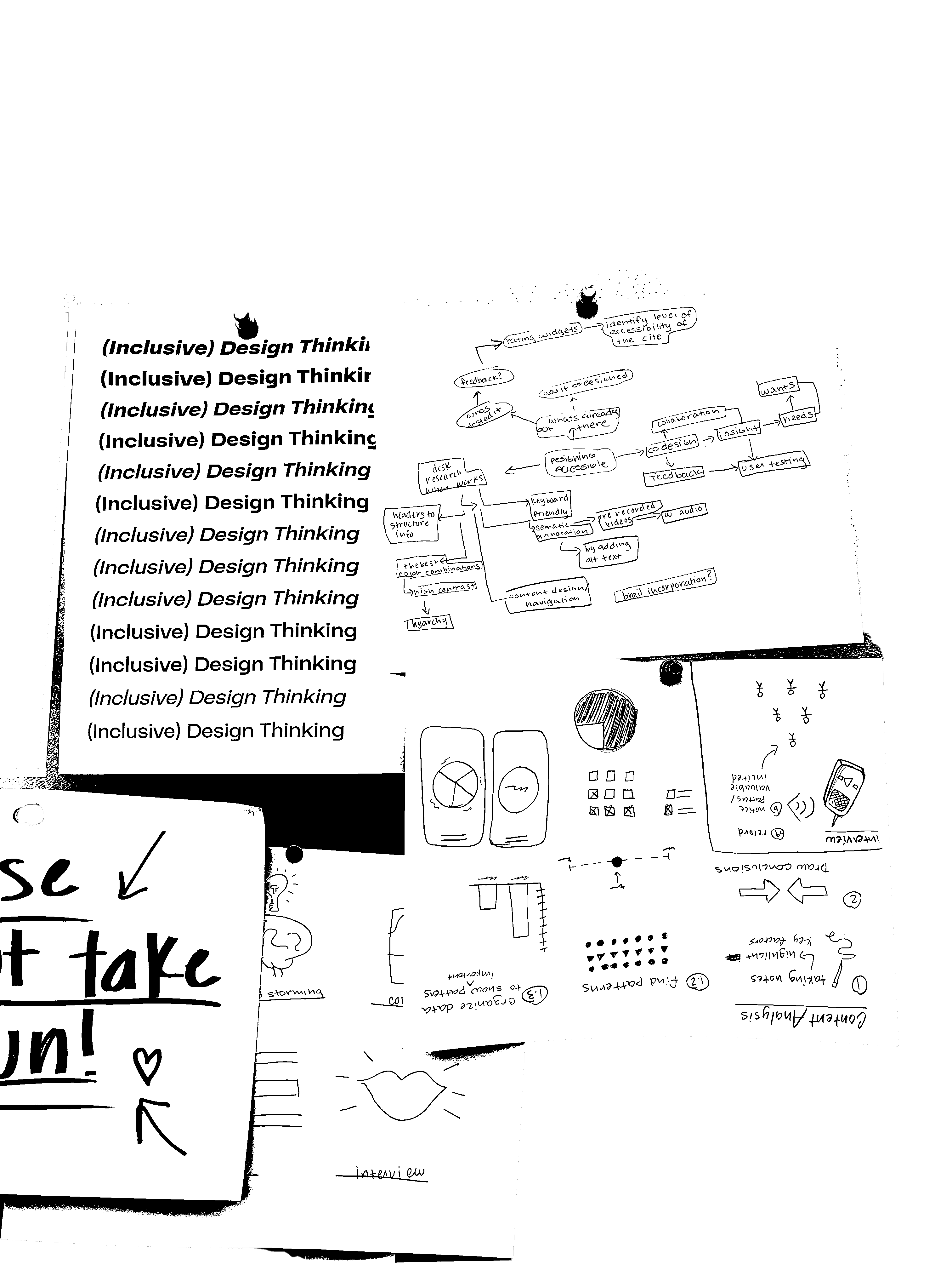
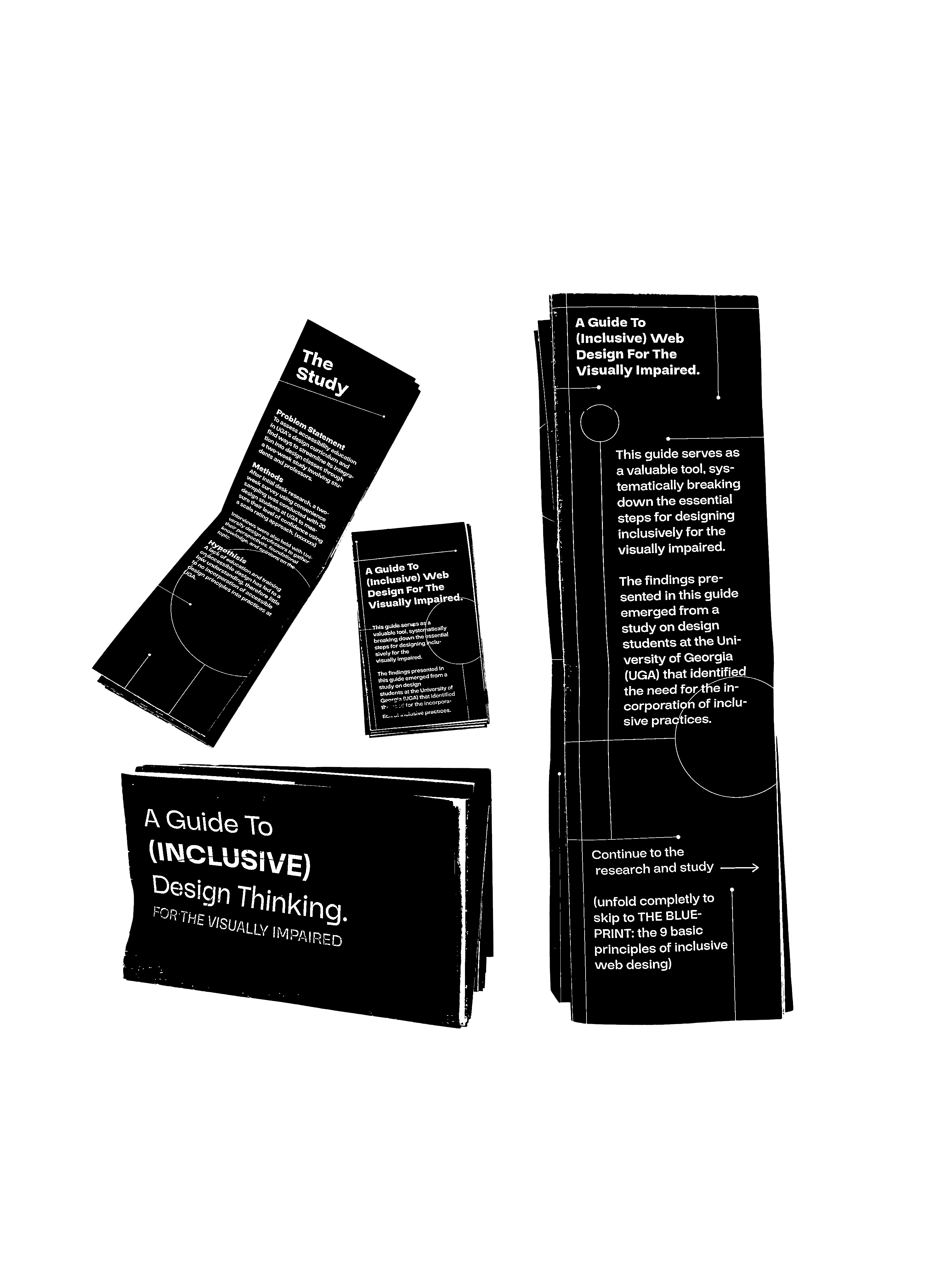
Desk Research
Curriculum Gaps:
- Accessible design is often treated as an add-on rather than a fundamental aspect of design education (Whitney, 2020) Existing Research:
- Research often neglects individual differences among software users, and there is a limited collaboration between human interface designers and those in the mainstream field. (Edwards, 1995)
Creating a Guideline
- A specific study in Siri Lanka focused on designing a guideline to overcome these web accessibility issues.
- (1)Limited access due to impairments. (2) User issues due to bad design. (3) Lack of available impaired-friendly applications. (4) Lack of communication. (5) Web Navigation issues
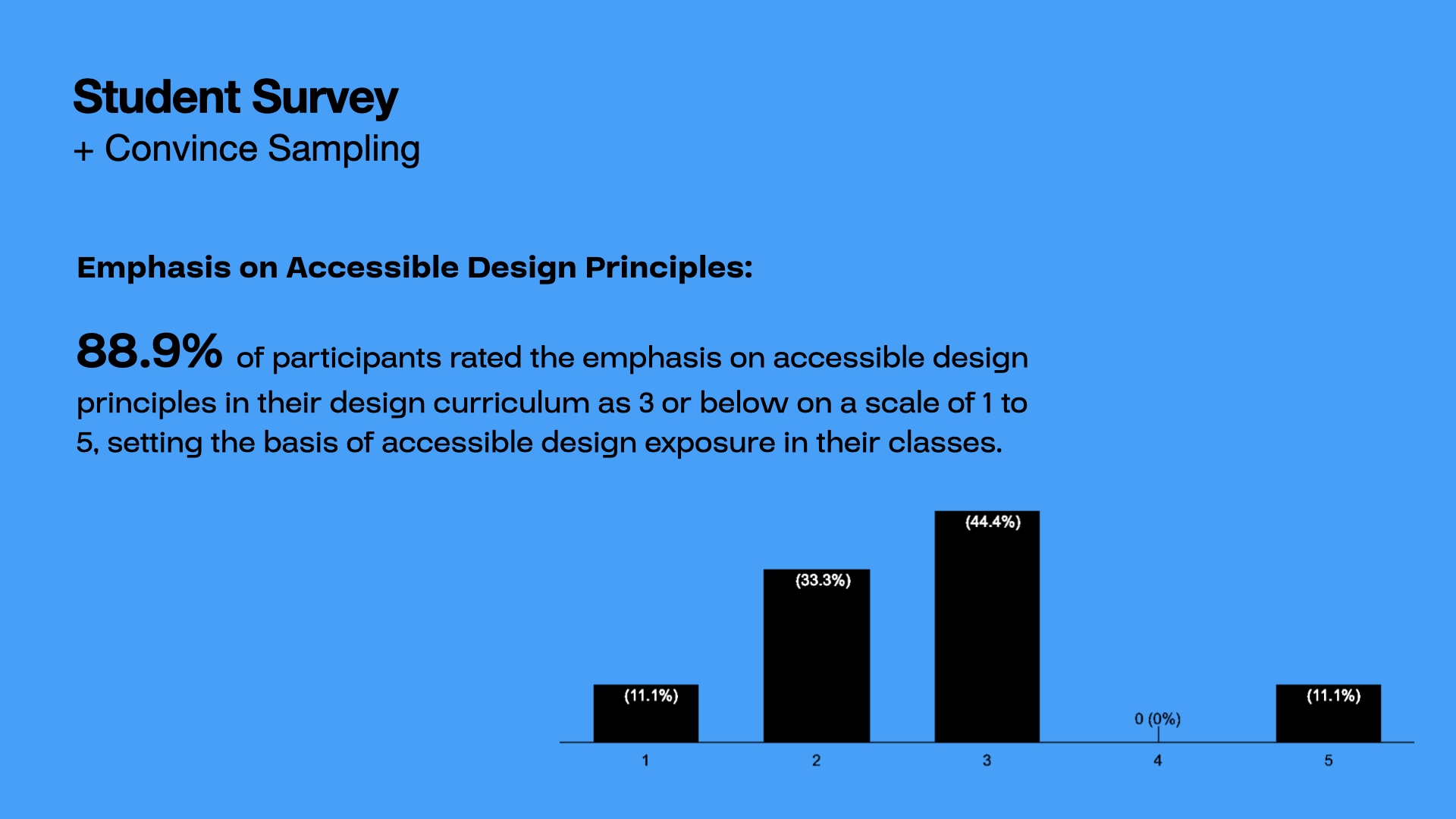
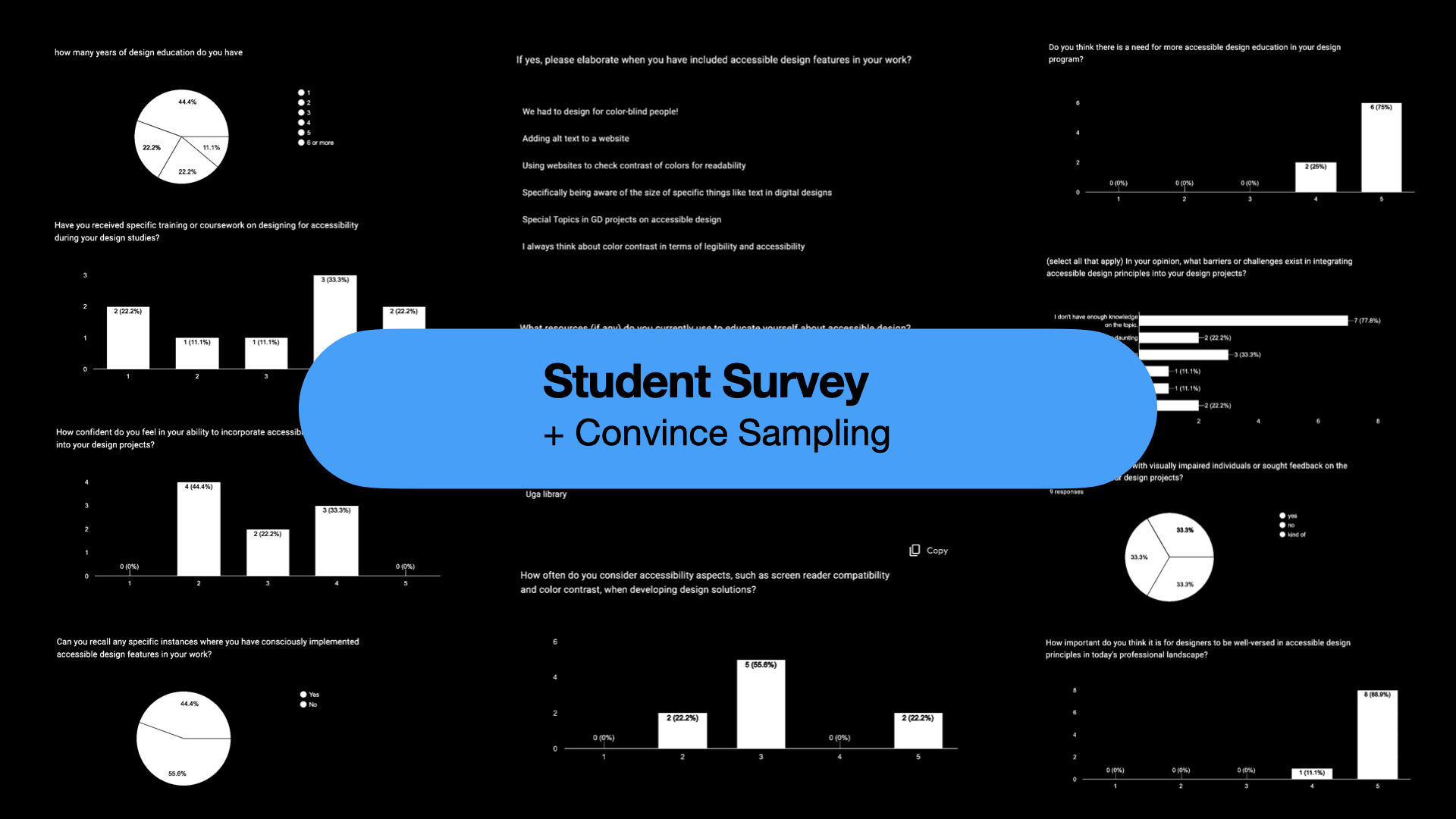
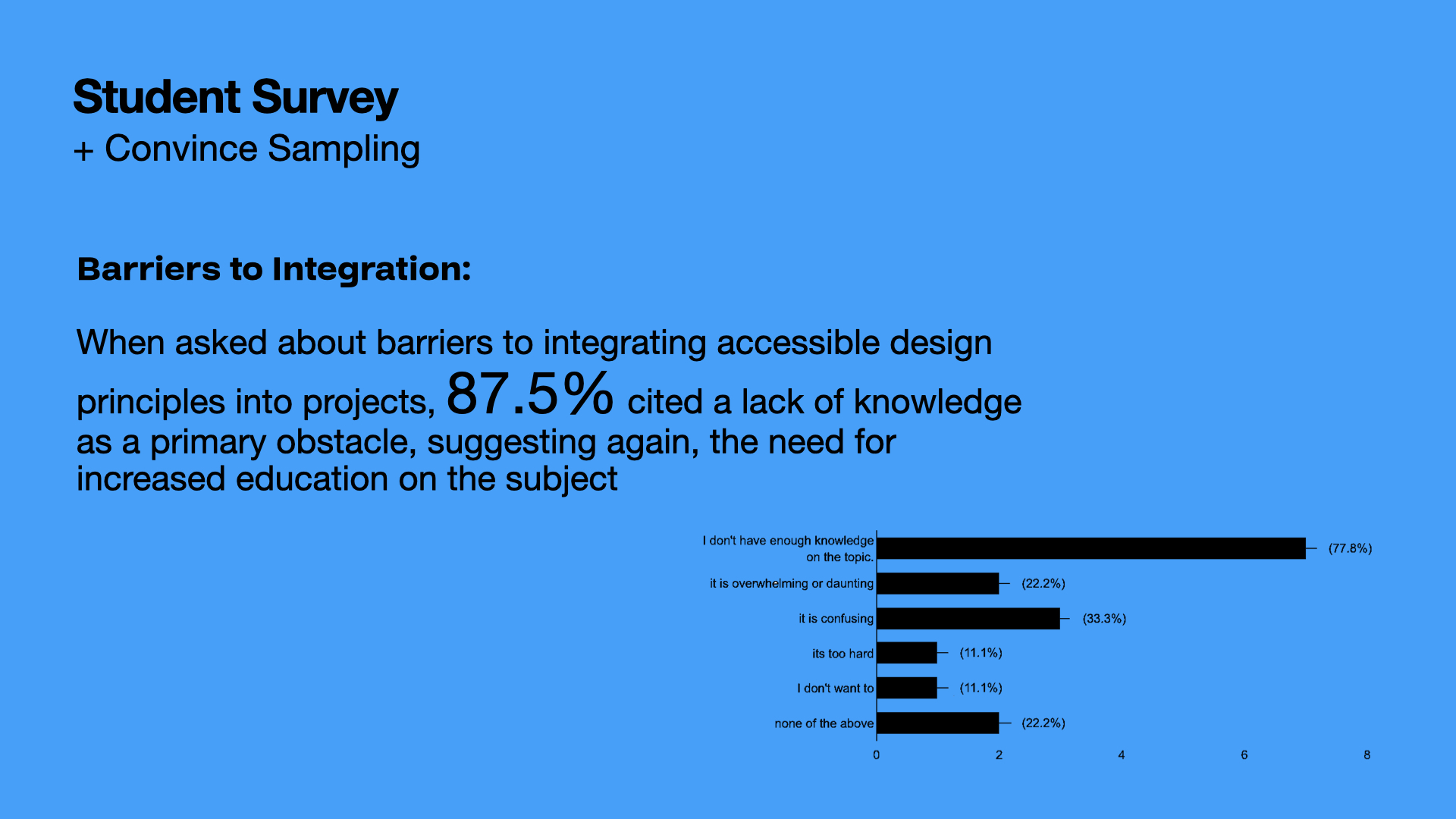


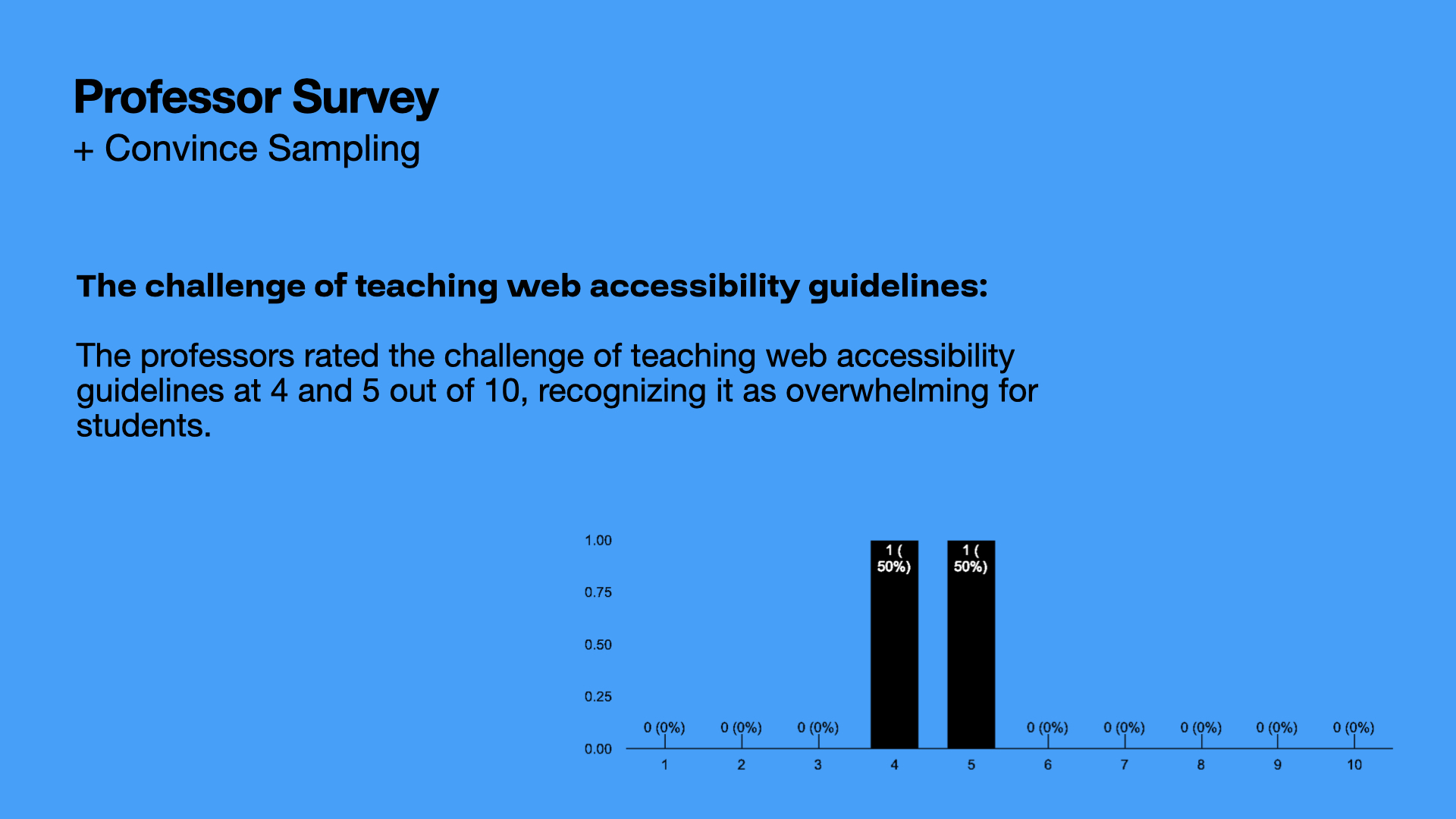
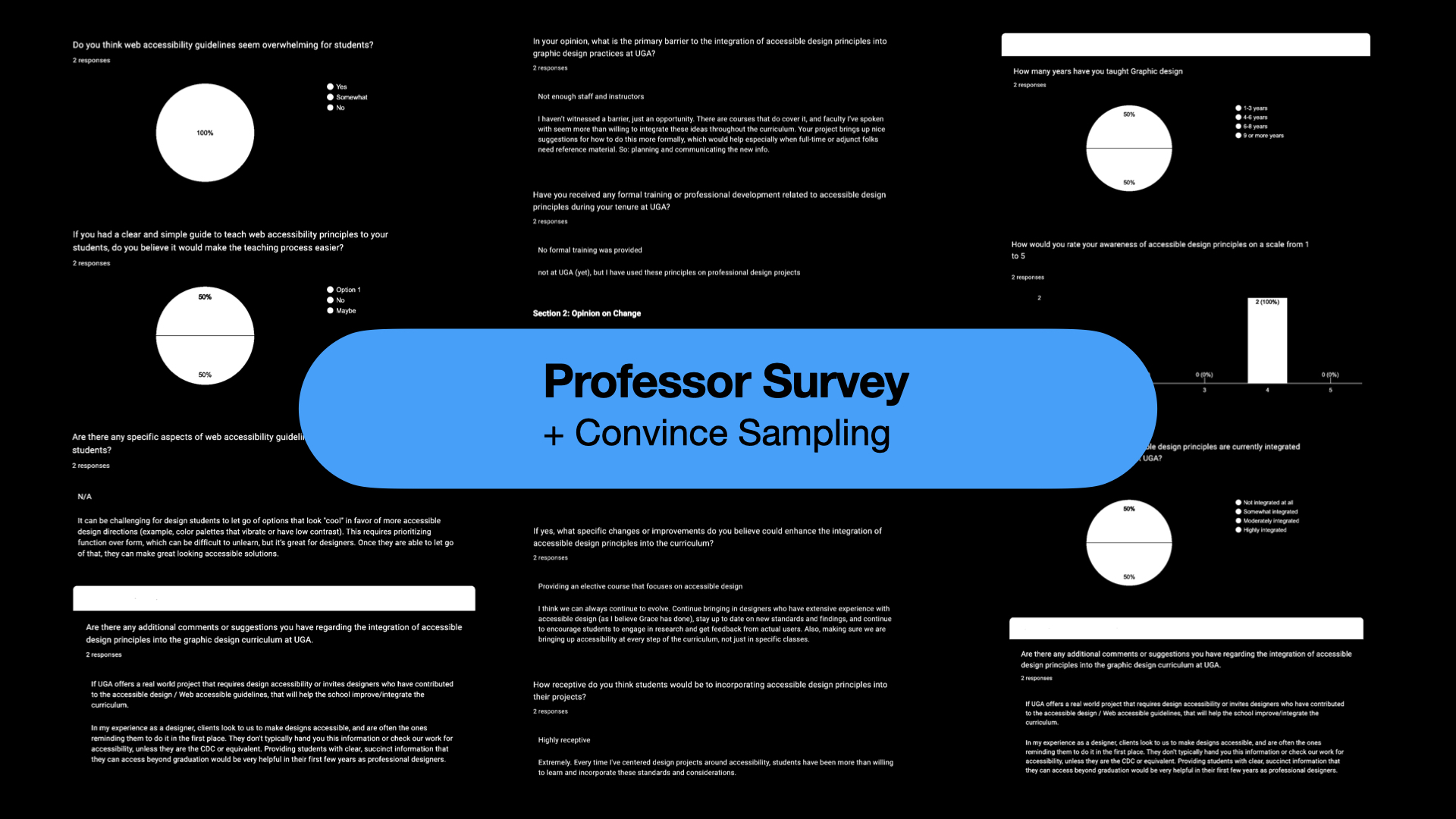
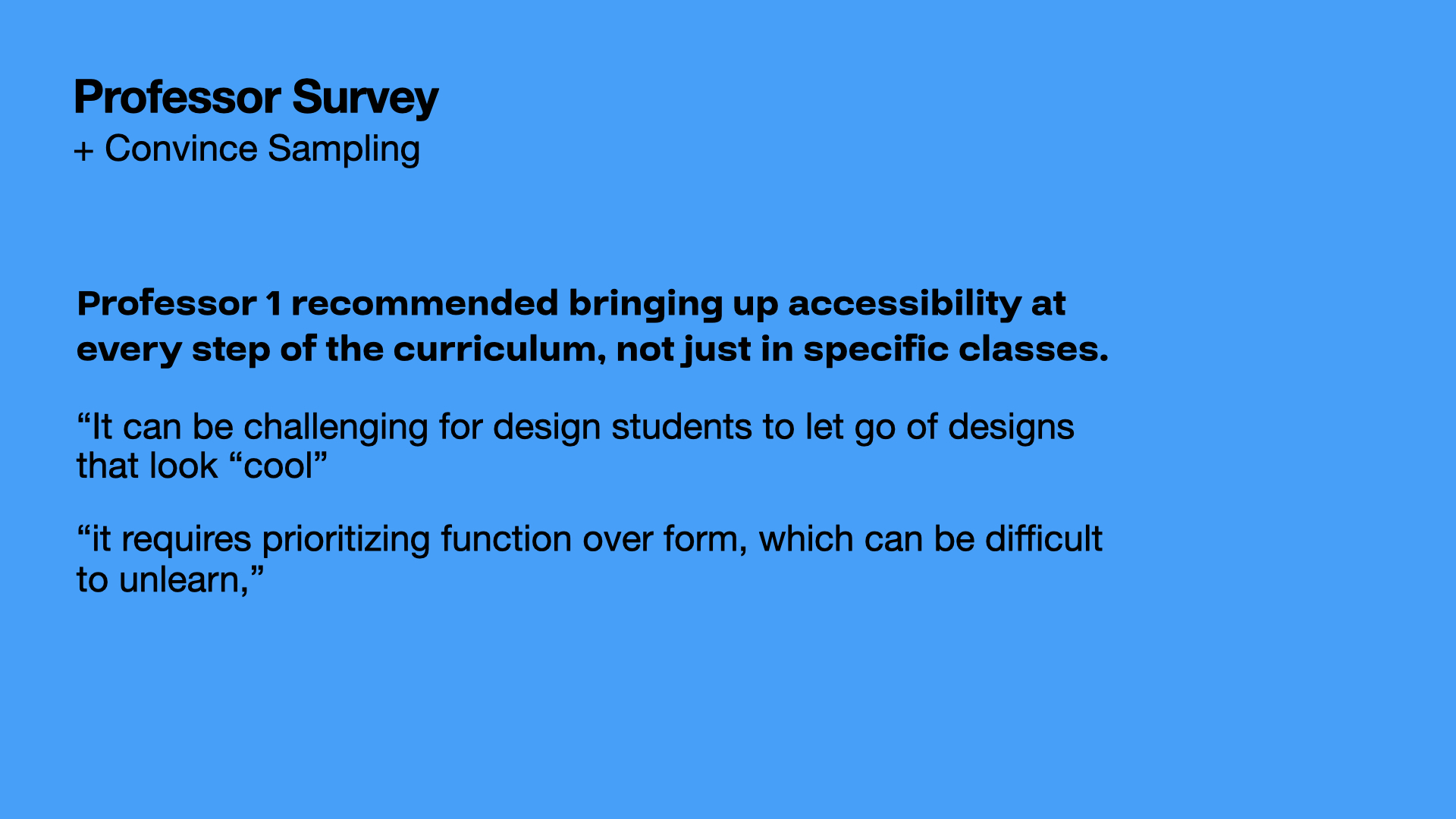

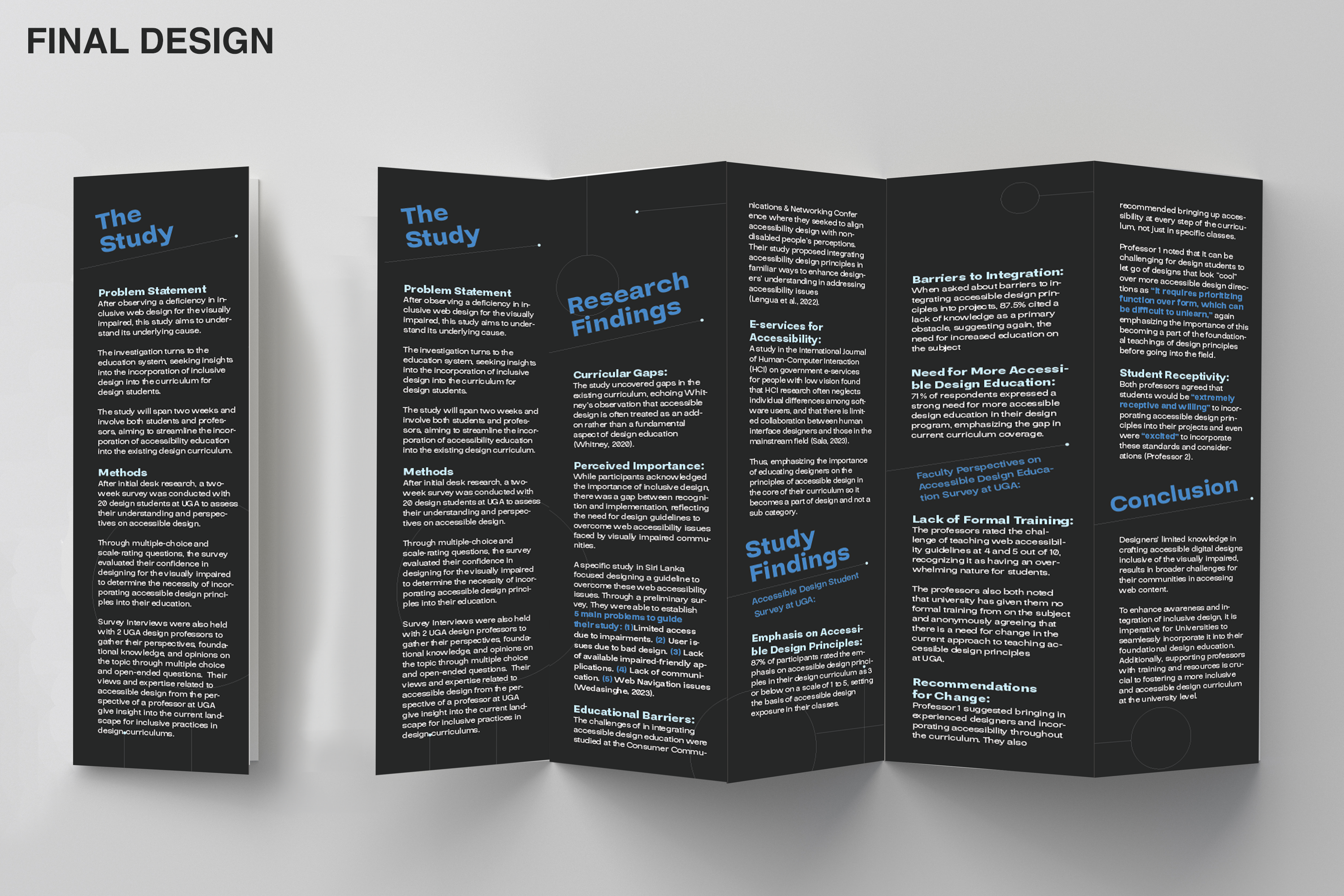
The Pamphlet on the back aims not only to identify existing gaps but also to propose practical solutions for a more inclusive and informed design community:
